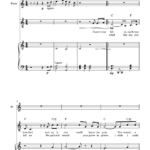The piccolo, with its sparkling, bright tone, is a captivating addition to any ensemble. While smaller than the flute, it demands its own unique skills and techniques to play well. This tiny powerhouse of an instrument can soar above a full orchestra or enhance the rustic charm of a marching band.
Delving into piccolo playing requires more than just technical proficiency; it involves embracing its distinct character. Mastery of the piccolo begins with understanding its role in both classical and contemporary music settings. Whether you’re preparing for a symphony or a spontaneous street performance, mastering the delicate balance of pitch and dynamics is essential.
The journey to becoming an accomplished piccolo player offers unique challenges, but the rewards are equally remarkable. From perfecting articulation to controlling intonation, every aspect of piccolo playing enhances your overall musicianship.
Get ready to explore techniques that will elevate your piccolo playing and leave a lasting impression on your audience. Join us in uncovering the art of this mighty little instrument!
Understanding the Basics of Piccolo Playing
The first step in tackling the piccolo is gaining a deep understanding of its physical structure. Though it resembles a flute, the piccolo’s smaller size and unique bore give it a distinct sound and response. Acquaintance with these differences is crucial for effective playing.
Next, focus on developing a solid embouchure. The piccolo demands an adaptation from flute techniques; its size requires a smaller aperture and refined control to achieve the desired tone quality and projection. Practicing long tones can significantly aid in mastering this vital aspect.
Embouchure Mastery
Incorporate exercises that focus on flexibility and breath control to boost your piccolo skills. Maintaining relaxed facial muscles while adjusting to the piccolo’s high pitch will facilitate smoother transitions and cleaner attacks.
Finally, pay attention to finger technique and articulation. The piccolo’s responsive nature allows for agile playing, but this necessitates precision in finger movement and clarity in tonguing. Practice scales and arpeggios at varying tempos to enhance these skills.
Understanding these foundational elements is critical to your development as a piccolo player. With patience and practice, you’ll unlock the expressive potential of this intriguing instrument.
Developing Proper Breathing Techniques for Piccolo Performance
Effective breathing is the cornerstone of exceptional piccolo playing. Due to its compact size and high pitch, the piccolo requires controlled, efficient airflow to produce a clear and stable sound across its range. Developing these breathing techniques will enhance your tonal quality and endurance.
Begin by practicing diaphragmatic breathing, a method that involves breathing deeply into the lower lungs. This approach maximizes air support and facilitates sustained, full-bodied notes. Lie on your back and place a book on your abdomen to visualize the rise and fall with each breath.
Breath Control in High Registers
Mastering breath control in the piccolo’s high registers is crucial. Use exercises that emphasize quick inhalations and steady exhalations to gain better control over dynamic variations. This will allow you to execute soft, floating passages as effectively as bold, powerful accents.
Additionally, focus on exercises that build lung capacity. Regular practice with sustained notes and gradual dynamics will improve your ability to maintain steady airflow—critical for the piccolo’s demanding repertoire.
Consistent attention to breathing techniques will significantly impact your piccolo performance. Not only will it enhance your playing, but it will also contribute to your overall stamina and endurance during performances.
Mastering Finger Techniques on the Piccolo
Agility and precision in finger technique are crucial for piccolo players to navigate its rapid passages with ease. The piccolo’s response time allows for fast, fluid movements, but achieving this requires dedicated practice and refined motor skills.
Begin by incorporating finger exercises that target dexterity and speed. Practicing scales and arpeggios in varied patterns can significantly enhance your technical prowess. Focus on maintaining even pressure and clarity across all notes, ensuring that each finger acts independently yet cohesively.
Additionally, practice trills and ornaments to develop finger agility further. These embellishments are often used in piccolo music to add flair and complexity, and mastering them will improve your overall technique. Start slowly, gradually increasing the tempo as confidence and accuracy grow.
Pay careful attention to finger positioning and relaxation. Tension can impede movement and accuracy, so always aim for smooth, relaxed transitions. Regularly incorporate etudes and technical studies into your repertoire to challenge and develop your skills.
Through consistent, focused practice, you’ll gain the finger control necessary to tackle even the most challenging piccolo pieces with finesse and confidence.
Exploring Advanced Piccolo Repertoire and Exercises
Transitioning to advanced piccolo repertoire marks an exciting phase in your musical journey. It offers the opportunity to showcase your refined skills, expressive capabilities, and technical prowess within a variety of musical styles. Advanced pieces often incorporate challenging techniques such as wide dynamic ranges, rapid passages, and intricate embellishments, which demand a high level of precision and artistry.
As you explore complex works, consider pieces by composers known for pushing the boundaries of piccolo music. Repertoire by Vivaldi, Debussy, and Karg-Elert can provide a rich and diverse selection of challenges and styles, giving insight into the piccolo’s versatility. Tackle these compositions with a focus on musical interpretation as well as technical execution.
Incorporate advanced exercises like double- and triple-tonguing to develop articulation speed and clarity. Technique books specifically designed for piccolo, such as Trevor Wye’s "Practice Books for the Piccolo," offer targeted exercises that address common challenges and help solidify your proficiency.
Exploring advanced repertoire not only enhances your technical skills but also deepens your appreciation for the piccolo’s expressive range. Embrace the challenges and rewards that come with mastering this captivating instrument, furthering your development as a dynamic and accomplished piccolo performer.
Choosing the Right Piccolo for Your Skill Level and Needs
Selecting the right piccolo is a pivotal decision that influences your playing experience and development. With an array of brands, materials, and price ranges available, it’s essential to consider your specific needs and skill level when choosing an instrument.
Beginner players should seek durable yet affordable options, typically crafted from materials like plastic or composite, which offer resilience and are easier to maintain. These piccolos are ideal for students developing their skills and exploring the instrument’s capabilities.
Material Matters
Intermediate and advanced players may benefit from exploring piccolos made from wood or metal. Wooden piccolos produce a rich, warm tone suited for orchestral settings, while metal ones deliver a bright, penetrating sound perfect for marching or outdoor performances.
Consider the piccolo’s key configuration as well. Standard and split E mechanisms offer different advantages in terms of ease and sound production, impacting your ability to navigate challenging passages.
When selecting a piccolo, testing multiple instruments is key. Assess each for tonal quality, ease of play, and comfort in your hands. Remember, the right piccolo will inspire confidence and growth, complementing both your current level and future aspirations as a piccolo player.
Maintaining Your Piccolo for Optimal Performance
Caring for your piccolo is crucial to ensure its longevity and consistent performance. Regular maintenance not only preserves the instrument’s aesthetic beauty but also safeguards its sound quality and responsiveness.
Begin by cleaning your piccolo after each practice or performance. Use a soft, lint-free cloth to wipe down the exterior, removing fingerprints and dust. A specialized cleaning rod with a cotton or microfiber cloth is ideal for swabbing the interior, preventing moisture buildup and residue accumulation.
Routine Check-Ups
Regular inspections for wear and tear are essential. Check pads and corks for any signs of deterioration, ensuring that keys remain well-aligned and mechanism issues are promptly addressed. Minor adjustments can make a significant difference in preventing costly repairs down the line.
Store your piccolo in its case when not in use, safeguarding it from temperature and humidity fluctuations that could warp or crack the material. Consider a humidity-controlled environment if your piccolo is wooden, as this will further protect it from environmental damage.
To maintain peak performance, routine professional servicing is recommended. A qualified technician can conduct comprehensive check-ups, ensuring your piccolo continues to delight with its sound and dependability for years to come.
The Bottom Line: Perfecting Your Piccolo Playing Skills
In mastering the piccolo, you embark on a journey of musical growth, embracing both its challenges and its rewards. From understanding the basics to advancing your technique, each step brings you closer to unlocking the full potential of this distinct instrument.
A solid foundation begins with grasping the essentials of embouchure, finger technique, and breathing. These fundamental skills set the stage for exploring more advanced repertoire and expressions. As you dedicate time to practice, you’ll discover the piccolo’s unique ability to convey emotion and character within any ensemble.
Selecting the right piccolo for your current level and needs is an integral part of this journey. The instrument must not only support your present skills but also inspire continued growth. Furthermore, consistent maintenance ensures your piccolo remains in peak condition to serve your artistic aspirations.
Ultimately, perfecting your piccolo skills is about the joy of creation and expression. Whether performing solos, partaking in ensembles, or simply enjoying personal practice sessions, the piccolo offers a distinctive voice that enriches the musical landscape.
Through perseverance and passion, you’ll find the piccolo not just an instrument to play but a lifelong companion in your musical adventures. As you continue to refine your craft and explore its possibilities, you’re sure to captivate audiences and deepen your own appreciation for this enchanting instrument. Keep striving, and let the piccolo take you on a rewarding musical journey.
















